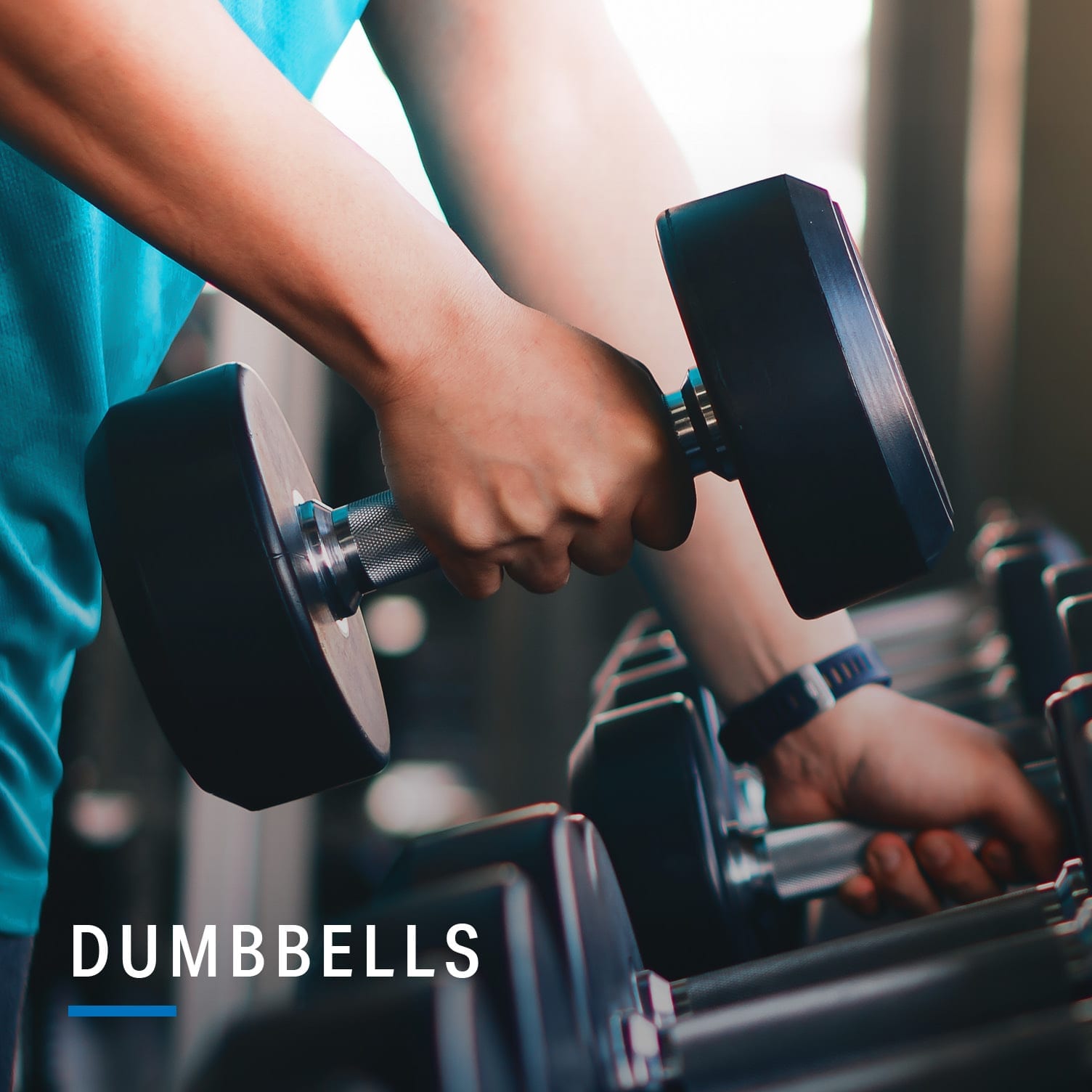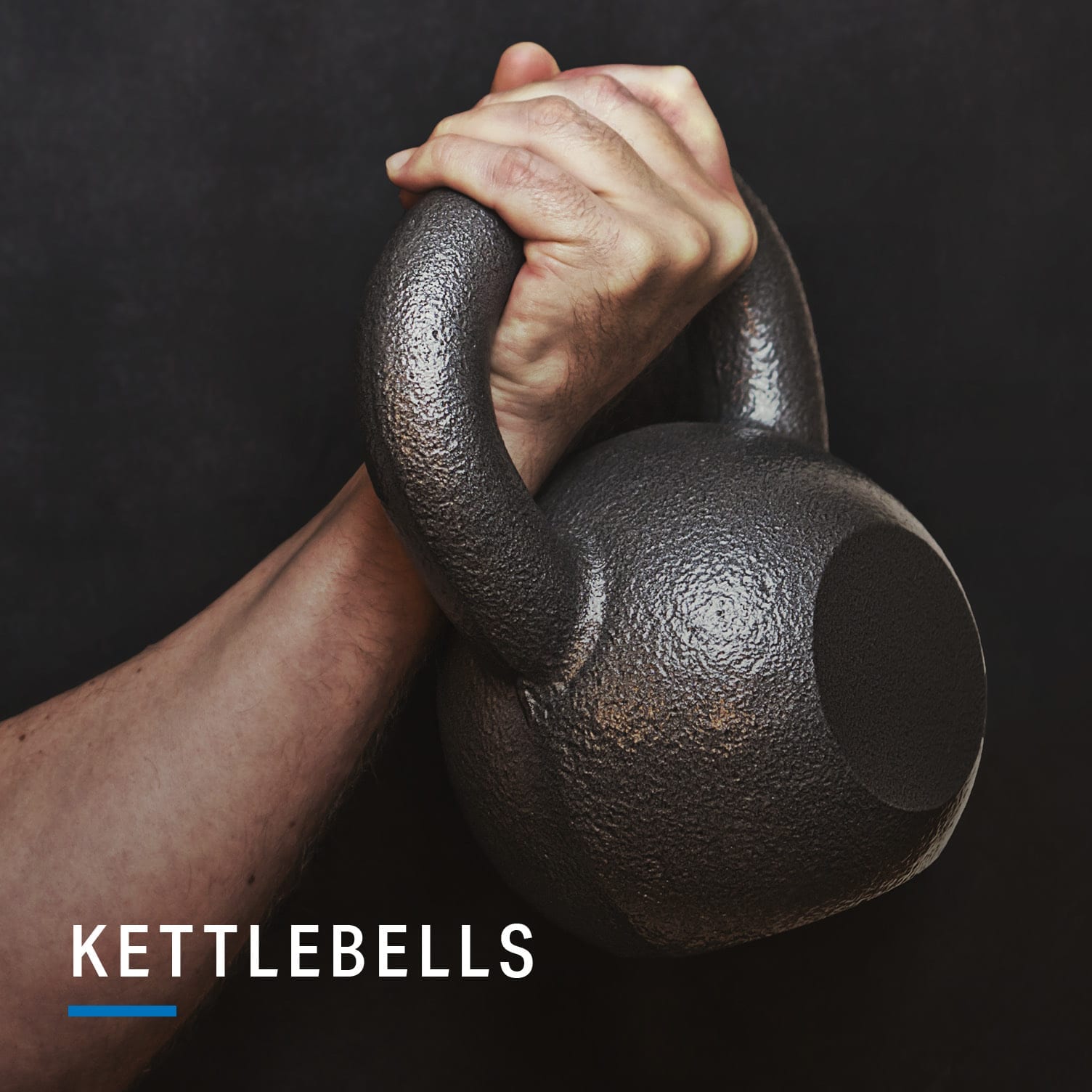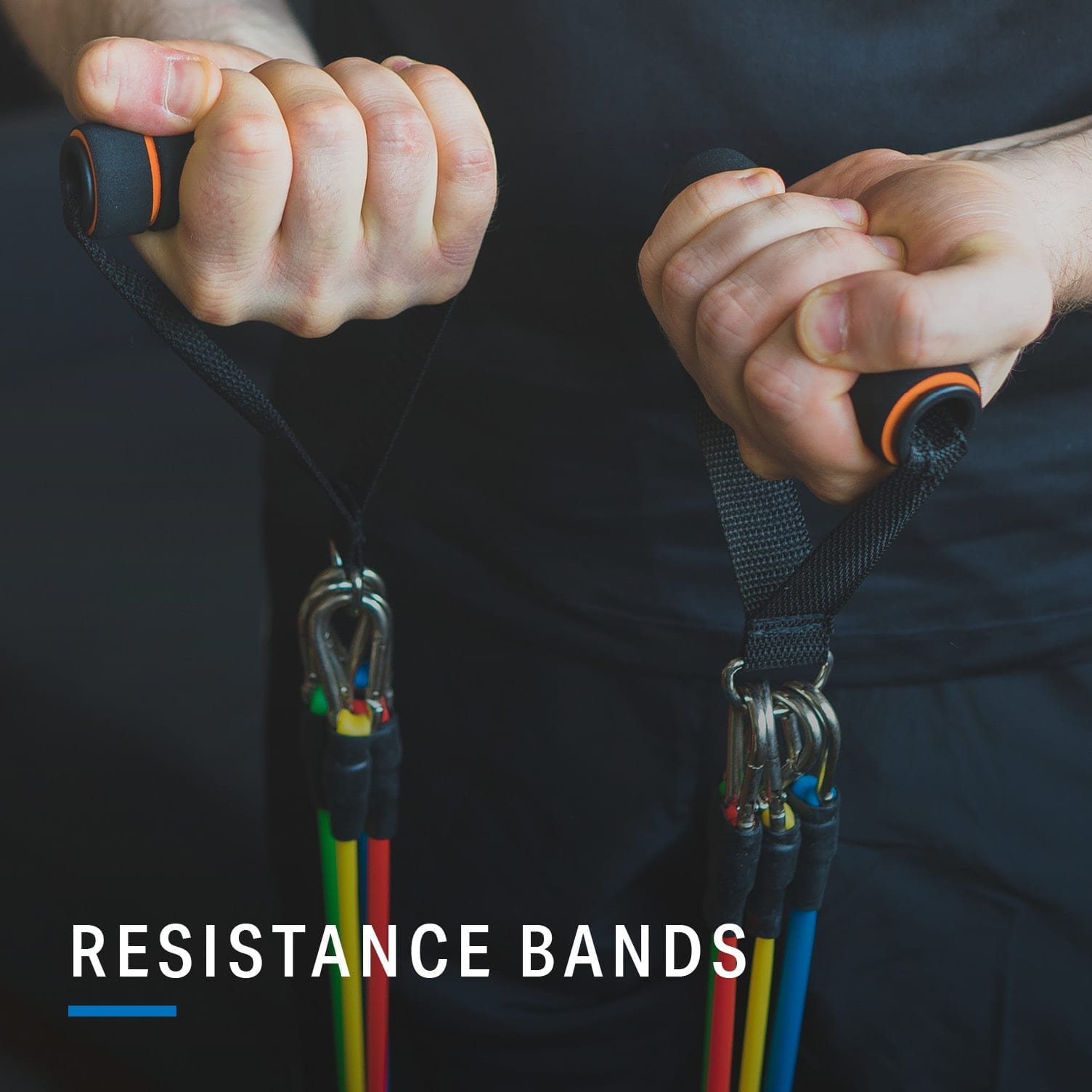
There’s more than one way to work out. Cardio, yoga, HIIT and powerlifting are distinctly different disciplines, but each is an effective means of moving your body, getting in shape, and maintaining your fitness. Even within certain disciplines, options vary widely. Like to run? You can do that on a path or a treadmill. Like yoga? Try Ashtanga, Bikram, Vinyasa and more. Prefer to lift weights? You can choose from a variety of strength-training tools, from barbells to bands.
There’s no one right answer when it comes to working out, but it’s helpful to learn how and when to use different types of equipment. For more information on strength training with dumbbells, kettlebells and resistance bands, we enlisted Ben Walker, personal trainer and owner of Anywhere Fitness. Below, he breaks down the benefits and need-to-know elements of each.

Think of a dumbbell like a smaller barbell you can hold in one hand. Its portability is helpful, whether you’re exercising at the gym or at home, and it simply works.
“Dumbbells are the most effective multi-purpose equipment if your fitness goals involve increasing load and intensity on a consistent basis,” says Walker. He mentions they can be used for any workout program. Try them with single-movement exercises like curls and rows, or employ dumbbells in calorie-torching dynamic compound movements that involve contracting two more muscle groups, like the squat to overhead press.
Dumbbells don’t need to be relegated solely to traditional lifting programs — they’re also great for HIIT, says Walker, who provides examples of dumbbell jump squats and planks to rows.
Of course, you don’t have to stick strictly to dumbbells. If you enjoy a good barbell workout, use dumbells as a complement to your favorite barbell exercises. “If your goals are focused on hypertrophy and muscle growth, then alternating the same exercises with barbells and dumbbells is a highly beneficial training protocol for muscle development,” says Walker. Barbells are great for helping you lift heavier overall, but dumbbells activate more stabilizer muscles. “Combining both training techniques creates a great variable for muscle growth.”

You can perform a serious workout with a single kettlebell. These versatile tools help you lift and swing your way to better strength and endurance, with benefits similar to those provided by dumbbells. If you’re debating between one or the other, consider the particular exercise and whether downward gravitational pull is a factor.
“When using a kettlebell, the weight is distributed to shift the load downward toward the floor faster,” says Walker. “This makes kettlebells beneficial for exercises where momentum is a factor.” Examples include kettlebell swings and single-leg deadlifts, where the kettlebell pulls against gravity to help you maintain the tempo and consistency necessary for each exercise. You can perform these exercises with a dumbbell or even a weight plate, but the kettlebell’s design results in a more efficient and comfortable movement.

You don’t need heavy pieces of iron to complete a strength workout. Sometimes, a simple resistance band will do. These bands vary in type and tension — some are straight bands with handles, while others are a continuous loop without handles — but all can be effective.
“Resistance bands differ from kettlebells and dumbbells because they help test your range of motion better against resistance,” says Walker. He notes that bands are particularly important for increasing flexibility and challenging tight muscles. “The force is not set by weight. It’s more set against your capabilities, and you can determine the level of resistance you wish to challenge,” he adds. Depending on the amount of force you want to apply, you can switch to a higher or lower tension band or even adjust your hand position to increase resistance and range of motion.
When using bands, Walker likes to address notorious tight areas like the hips and back. “Functional movements such as band pull-aparts or adding resistance to lower-body movements are essential for taking your flexibility game to the next level,” he says. He mentions exercises such as fire hydrants, seated clamshells and side-leg lifts, which target the gluteal muscles. Add a resistance band to the mix, and you can build lean muscle mass with moves that can’t accommodate a barbell, dumbbell or kettlebell.
People of all ages and abilities can benefit from bands, says Walker. “They don’t require the strength needed to complete a full repetition like kettlebells or dumbbells. You can work against the resistance at your own tempo and still complete the full movement.”
PUTTING IT ALL TOGETHER
There isn’t one right answer when it comes to resistance workouts. All of the above are great options for building strength and maintaining fitness, but rather than focusing on one, try them all. And throw some barbells and bodyweight workouts into the mix while you’re at it.
“Muscle groups continuously need different variations and movement patterns when performing weight training,” says Walker. Keep your body guessing with multiple exercises and varied equipment, and you can increase strength, range of motion and flexibility while avoiding the dreaded plateaus.
Check out “Workout Routines” in the MyFitnessPal app to discover and log workouts or build your own with exercises that fit your goals.



